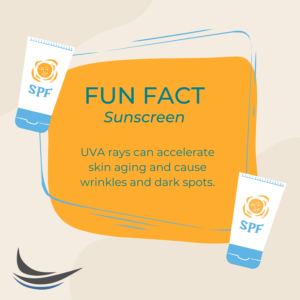 Our bodies change during puberty. The Tanner-stages of sexual maturity ratings help provide guides for physical development changes. These changes start around age 8 for children assigned female at birth and age 9 or 10 for children assigned male at birth for Stage 1 and progress to Stage 5 which typically ends around age 15. Changes may not be fully visible at first, but then the body begins to undergo physical changes, including gaining height and weight. Hair grows, skin changes (acne may appear), and reproductive organs/ genitals are changing. For those who are assigned female a birth, breasts develop, and for those assigned male at birth males, voice changes, muscles get larger, and ejaculation occurs. Puberty can be especially challenging for teens who are questioning gender identity and teens may experience mental health challenges such as depression during puberty.
Our bodies change during puberty. The Tanner-stages of sexual maturity ratings help provide guides for physical development changes. These changes start around age 8 for children assigned female at birth and age 9 or 10 for children assigned male at birth for Stage 1 and progress to Stage 5 which typically ends around age 15. Changes may not be fully visible at first, but then the body begins to undergo physical changes, including gaining height and weight. Hair grows, skin changes (acne may appear), and reproductive organs/ genitals are changing. For those who are assigned female a birth, breasts develop, and for those assigned male at birth males, voice changes, muscles get larger, and ejaculation occurs. Puberty can be especially challenging for teens who are questioning gender identity and teens may experience mental health challenges such as depression during puberty.
For those in their 20s bone and muscle mass reach their peak. You may feel physically strongest and in peak performance. For those who experience menstruation, periods tend to be regular as estrogen peaks, and chances of getting pregnant are good until fertility begins to rapidly declines around age 35.
While the term “second-puberty” is not recognized as a medical term, it does help explain the developmental changes that continue to take place in the body after puberty. One in their 20’s, 30’s, and 40’s will experience different changes in the body as hormone levels decline. Those who are taking hormonal therapy and testosterone treatment will notice changes like those experienced during puberty such as hair and voice changes and mood changes.
A second puberty for those with a vulva often refers to perimenopause–the period before menopause (typically in one’s late 40s). Estrogen levels begin to become more irregular and decline; the vaginal walls thin and become drier. Bone and muscle mass decreases. You may notice gray hair, sagging skin, and wrinkles. Progressing into the 40s weight gain and decrease in height are common due to the discs between the vertebrae getting smaller as well as symptoms of menopause until the end of one’s periods around the early 50s.
Testosterone levels begin to gradually decrease for those with a penis, around 1% a year after age 40 during age-related hormone changes similar to menopause. While 10-25% of men have low testosterone levels, most have levels in the average range. Additional changes include bone and muscle mass decreasing, while weight gain, especially fat in the belly or chest may set in. You may notice gray hair and skin changes. There may be difficulties with urinating or maintaining an erection as the prostrate changes and testosterone decrease with age.
While the physical and hormonal changes vary throughout ages and states of identity, maintaining a healthy lifestyle- physical activity, eating well, managing any chronic health conditions, and receiving routine medical care are all important. All the challenges that we tend to associate with puberty in adolescence such as anxiety and depression can persist into adulthood but just look different. If you would like support and talk to a mental health specialist, CARE clinicians are here to help. https://care-clinics.com/
Written By: Charlotte Johnson, MA, LPCC
We’re Here to help
Our wellness experts will be happy to take care of you. You can CLICK HERE to schedule an appointment now or call (612)223-8898.
Meet Clinicians
We’re united by our commitment to providing effective, relevant, and innovative mental health support at all stages of your journey. Click Here to find a therapist or find out more about who we are, where we come from, and how we live out CARE’s mission every day.
The professionals at CARE are actively collecting and creating resources to help with what you need and address frequently asked questions. We’re Here for You.



